Our Car Audio Masterclass series offers a comprehensive introduction to the essential concepts of car audio systems, covering everything from basic terminology to advanced measurement techniques. To learn more, check out the other articles in the series:
- Car Audio Masterclass 101.1 – Audio Basics: Learn key audio terms and concepts.
- Car Audio Masterclass 101.2 – Understanding Basic Electricity: Explore voltage, current, and resistance.
- Car Audio Masterclass 101.3 – Electric Circuits: Understand series and parallel circuits.
- Car Audio Masterclass 101.5 – Direct and Alternating Current: Compare DC and AC currents.
- Car Audio Masterclass 101.6 – AC Calculations: Dive into AC waveform calculations.
- Car Audio Masterclass 101.7 – The Decibel: Learn about decibel measurements.
- Car Audio Masterclass 101.8 – Speakers, Power, and SPL: Understand speaker power and sound levels.
- Car Audio Masterclass 101.9 – Time and Frequency Domain Measurement: Explore frequency and time measurements.
- Car Audio Masterclass 101.10 – Digital Multimeter: Learn to use a multimeter in car audio.
The fourth lesson in our Car Audio Masterclass series will discuss magnetism. At a very technical level, magnetism is quite complicated. It involves quantum mechanics, which is well beyond the scope of this article. However, just as electricity can be simplified using the concept of electron movement, we can simplify this topic by explaining the effects of magnetic fields rather than the science of why they exist. Let’s dive into talking about magnets, magnetic fields, and electricity.
Magnetism Basics
Let’s start by discussing permanent magnets. A magnet is a material that produces a magnetic field. Every magnet has two poles—one called the North and the other the South. The magnetic intensity is strongest at these poles. Magnets are often made of iron, but neodymium, cobalt, nickel, and samarium are also popular materials.

A magnetic field is an invisible force that surrounds a magnet. It comprises lines of magnetic flux connecting from the North to the South pole in three dimensions. These lines form closed loops inside the magnet and never intersect. We call these lines magnetic flux lines or magnetic field lines.
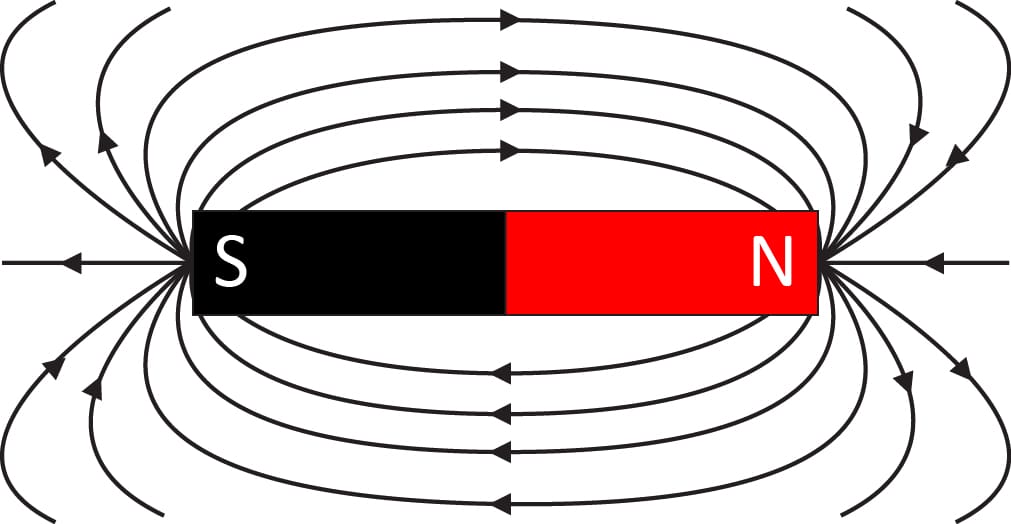
Another factor in understanding magnetism is that like poles repel each other, and opposite poles attract. For example, if you had two magnets on a table and brought the north pole of one magnet towards the north pole of the other, the magnets would repel each other. Conversely, if you brought the north pole of one magnet towards the south pole of the other, the magnets would attract each other.

You can purchase pen holders and model stands that use magnetic levitation to float objects in space. Magnets are often used as bearings in industrial energy storage flywheels as there is no physical contact and, thus, no friction.
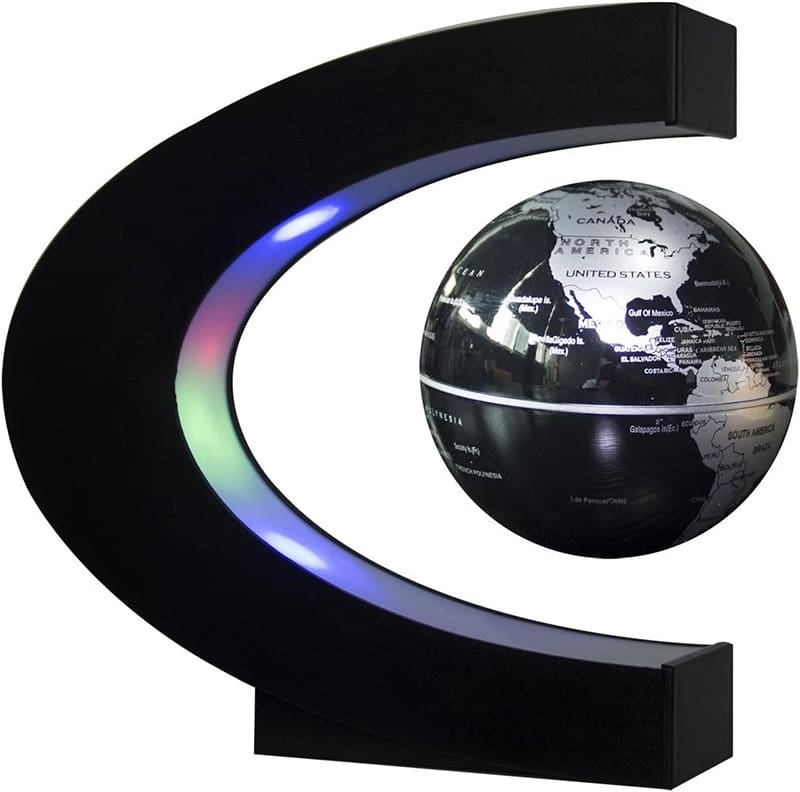
Magnetic Field Strength
When the field is stronger, the density of flux lines between the north and south poles is higher. So, a small neodymium magnet may have more flux lines than an inexpensive iron magnet. In the scenario of the two magnets on the table described above, the stronger magnetic field would cause the stationary magnet to start moving when the other magnet was farther away.
Units for Magnetic Properties
The unit Weber (Wb) is the SI standard for quantifying magnetic flux, which measures the total magnetic field passing through a given area. One Weber is the magnetic flux that produces an electromotive force of one volt in a circuit when the flux is generated or removed in one second. Before we explain that in more detail, we’ll add another term: the Tesla. A Tesla (T) is defined as one Weber per square meter, which is a measure of magnetic flux density. As an equation, that’s 1 T = 1 Wb/m².
Think of magnetic flux as the number of water droplets passing through a net. The Weber is like counting the total number of droplets passing through. The Tesla, on the other hand, measures how many droplets pass through each square meter of the net, giving us a sense of how concentrated the flow is.
Magnetism and Electricity
In defining the Weber, we mentioned voltage. Magnetic fields and electricity are completely intertwined concepts. Where there is current flow, there are magnetic fields. Conversely, where there are moving magnetic fields, there is current flow. This phenomenon is known as magnetic induction. Returning to our definition of a Weber, when the magnetic flux through a conductor changes by one Weber (1 Wb) in one second (1 s), an electromotive force (EMF) of one volt (1 V) is induced across the ends of the conductor. For example, if you connected a small light bulb to a piece of wire and quickly moved a large magnet towards and away from that wire, you might be able to light the bulb.
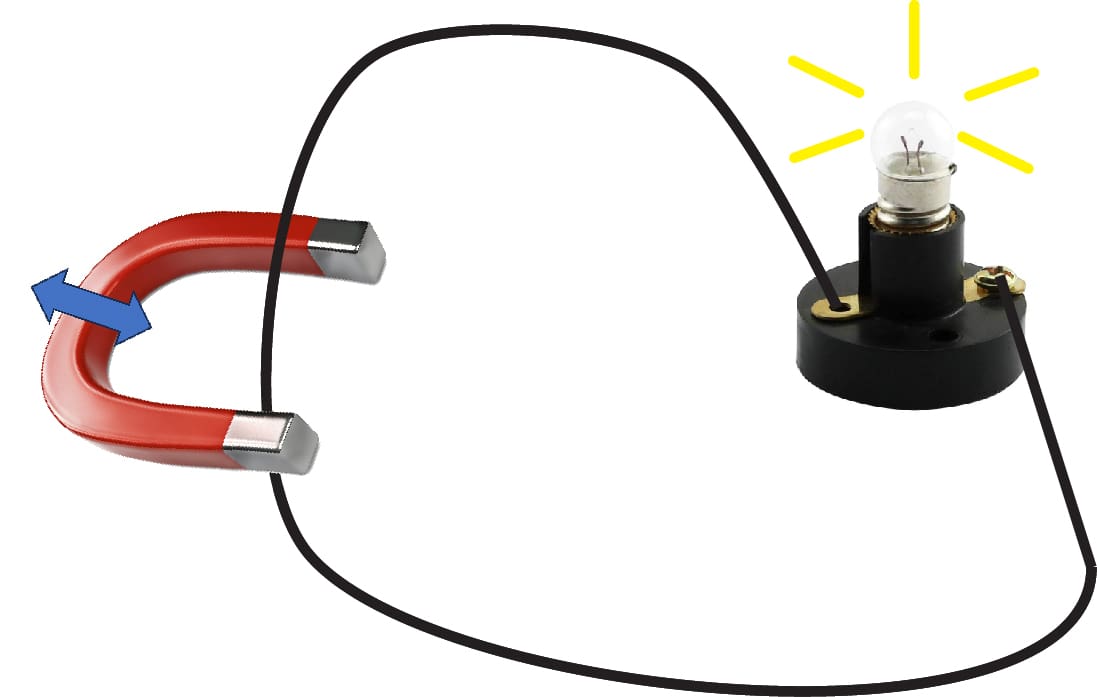
Here’s a trick to the above scenario. If you loop the wire so that more sections of the wire encounter the magnetic field, the motion of the magnet will induce more voltage.
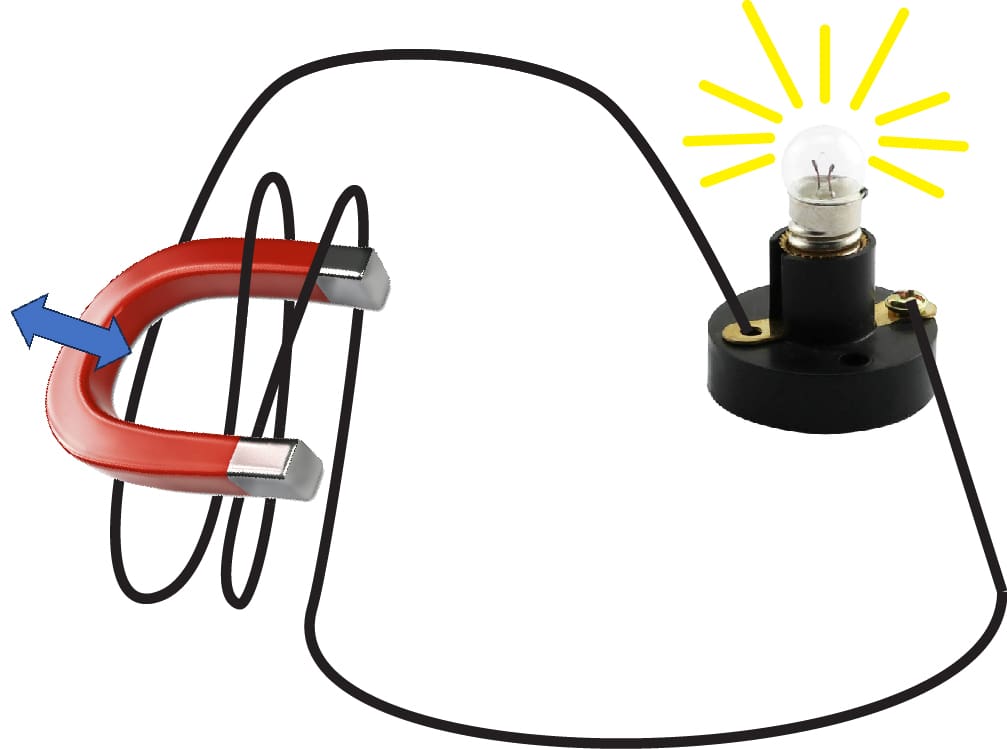
As mentioned, when you pass current through a conductor, it creates a magnetic field around the conductor. More current results in a stronger magnetic field. We’ll talk about this in a future lesson.
The Right-Hand Rule
Some very specific rules about the direction of current flow and the direction of a magnetic field allow items like speakers, relays, solenoids, and transformers to function. Picture a wire running vertically through the space in front of you. Imagine reaching out and grabbing the wire with your palm facing to the left. Your fingers will wrap around the wire and face back at you. If you extend your thumb upwards parallel to the wire, that would indicate the direction of the current flow. Your fingers point in the direction of the magnetic field – which will be counterclockwise around the wire.

In reality, you would first determine the direction of current flow, then use the right-hand rule to determine the direction of the magnetic field around the conductor. Obviously, your hand isn’t going to cause current to flow in a wire, unless you are Magneto.
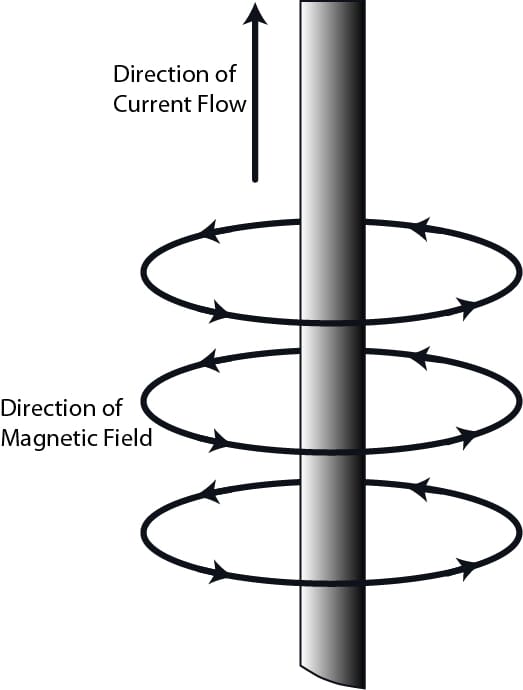
In the above image, if we had a wire out in front of us, with current flowing upwards from the bottom towards the top, we would grab the wire with our right hand, palm facing left. Your thumb matches the direction of the current flow, and your fingers indicate the direction of the magnetic field.
What we have just explained is called Faraday’s Law. This law states that a change in magnetic flux through a circuit induces an electromotive force (EMF) in the circuit. This change in the environment can be due to a variation in the magnetic field strength, the relative motion between the magnet and the conductor, or a change in the area or orientation of the conductor within the magnetic field.
Magnetism is Fundamental to Understanding How Speakers Work.
It’s difficult to grasp the entire concept of magnetism as it exists in three dimensions. Further, its effects are based on time, and not just location. Nevertheless, this lesson serves as a good introduction to the concept. We’ll build on this further as we talk about speakers and relays in future articles.
The next lesson will discuss direct and alternating current.

